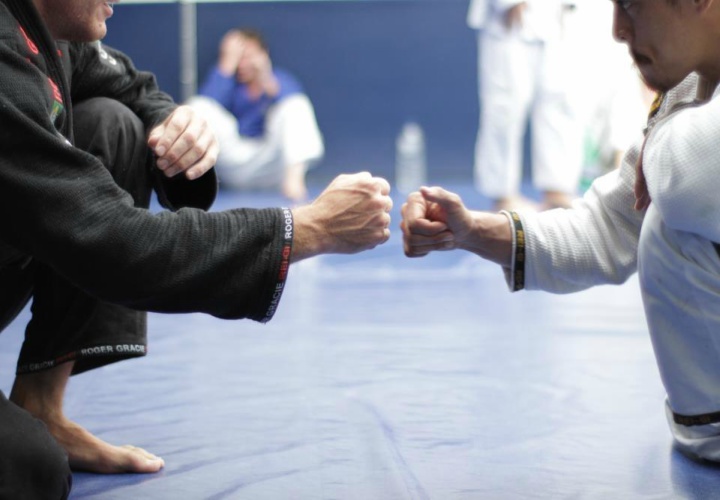What is a BJJ class like?
Brazilian jiu jitsu, also known as BJJ, is a martial art that focuses on grappling and ground fighting. It originated in Brazil in the early 20th century and has since become one of the most popular martial arts in the world, seeing huge growth around the world particularly in the last 20 years. There are thousands of BJJ schools around the world and you can find one in almost every large town or city. Here’s what you can expect in a typical BJJ class.
The beauty of BJJ is that anybody can do it. Whether you are young or old, athletic or not, you will see all types of people in a BJJ gym.
Starting any new sport or hobby can be daunting. But with a little courage, you will find that just like any other sport, BJJ can be a fun and rewarding new experience. The vast majority of BJJ schools have a friendly and welcoming atmosphere for beginners, and there is a very low risk of injury, especially for beginners.
When you first enter a class
When you first enter a BJJ class, you will be greeted by the instructor and other members of the class. Everyone will be wearing a traditional gi, which is a uniform consisting of a jacket, pants, and belt. The instructor will then explain the basics of BJJ, including its history and the basic techniques that will be taught in the class.
The warm up
After the introduction, the class will begin with a warm-up. This usually involves some stretching and calisthenics to get the body ready for the physical demands of BJJ. The warm-up is important because BJJ can be physically demanding, so it’s important to prepare your body for the workout. Warm ups can vary from gym to gym, but they will often include some of the following:
- Running (up and down or in circles around the mat)
- Jumping Jacks
- Push ups and push up variations
- Sit ups and sit up variations
- Planks
- Shrimps (BJJ specific movement of the hips)
- Squats and squat based movements
Partner based warm ups and Drills
Some schools will do warm ups that include drilling with a partner. This means you will pair up with someone and run through some basic moves to warm up. Examples of this might include:
- Basic takedown drills
- Grip fighting simulation
- Closed guard based drills e.g. arm bars on each side
- Open guard based drills e.g. passing the legs on each side
- Body weight drills/games like wheelbarrow races
Technique
Once the warm-up is complete, the instructor will demonstrate the techniques that will be practiced in the class.. The instructor will explain the proper technique for each move and then the class will practice the techniques together. Most typical techniques will fall into the following categories:
- Escapes: Techniques for escaping from various positions and getting back to a neutral position.
- Sweeps: Techniques for reversing the position and getting on top of an opponent.
- Submissions: The application of holds that force an opponent to tap out or submit. These may include armlocks, chokes, and leg locks.
- Transitions: Techniques for moving between positions and maintaining control.
- Defense: Techniques for defending against common attacks and counterattacking – usually these will be divided by position like open or closed guard.
- Takedowns: Techniques for taking an opponent to the ground and establishing a dominant position.
As you practice the techniques, you will be partnered with other members of the class. This is an important part of BJJ because it allows you to test the technique with an element of resistance from an opponent. You will work with your partner to try to execute the techniques correctly and to defend against them. This can be challenging, but it is also very rewarding as you improve your skills and become more confident in your abilities.

Sparring (Rolling)
One of the things that sets BJJ apart from other martial arts is its emphasis on sparring, or rolling. This is when two practitioners engage in live sparring, using the techniques they have learned in the class. There are multiple benefits to rolling:
- Improves technique: Sparring allows students to practice their techniques in a more realistic setting and helps them develop their timing and positioning.
- Builds endurance: Sparring can be physically demanding, which helps students build endurance and improve their physical conditioning.
- Increases confidence: As students become more proficient at sparring, they may develop a greater sense of confidence in their abilities.
- Enhances problem-solving skills: Sparring requires students to think on their feet and come up with strategies to counter their opponents’ moves. This helps students develop their problem-solving skills and adaptability.
- Promotes teamwork and camaraderie: Sparring is often done in a cooperative and respectful manner, which can help build teamwork and camaraderie among students.
Rolling is usually not mandatory, especially on your first day. If you prefer to sit out and watch people rolling for the first time, that’s ok. But you should definitely start rolling as soon as you can, because you will learn and progress so much faster.

Conclusion
Overall, taking a BJJ class can be a great way to improve your physical fitness, learn self-defense skills, and meet new people. It can be challenging at times, but the rewards of learning BJJ are well worth the effort. Whether you’re a beginner or an experienced martial artist, a BJJ class is a great way to improve your skills and challenge yourself.
Looking for more info on beginner techniques? Check out “Basic BJJ Techniques Every Beginner Should Know“
- Buggy Choke: The Complete Guide - March 6, 2024
- Jiu Jitsu World League: Your Complete Guide - March 5, 2024
- How much do UFC referees make? A comprehensive guide - March 5, 2024








